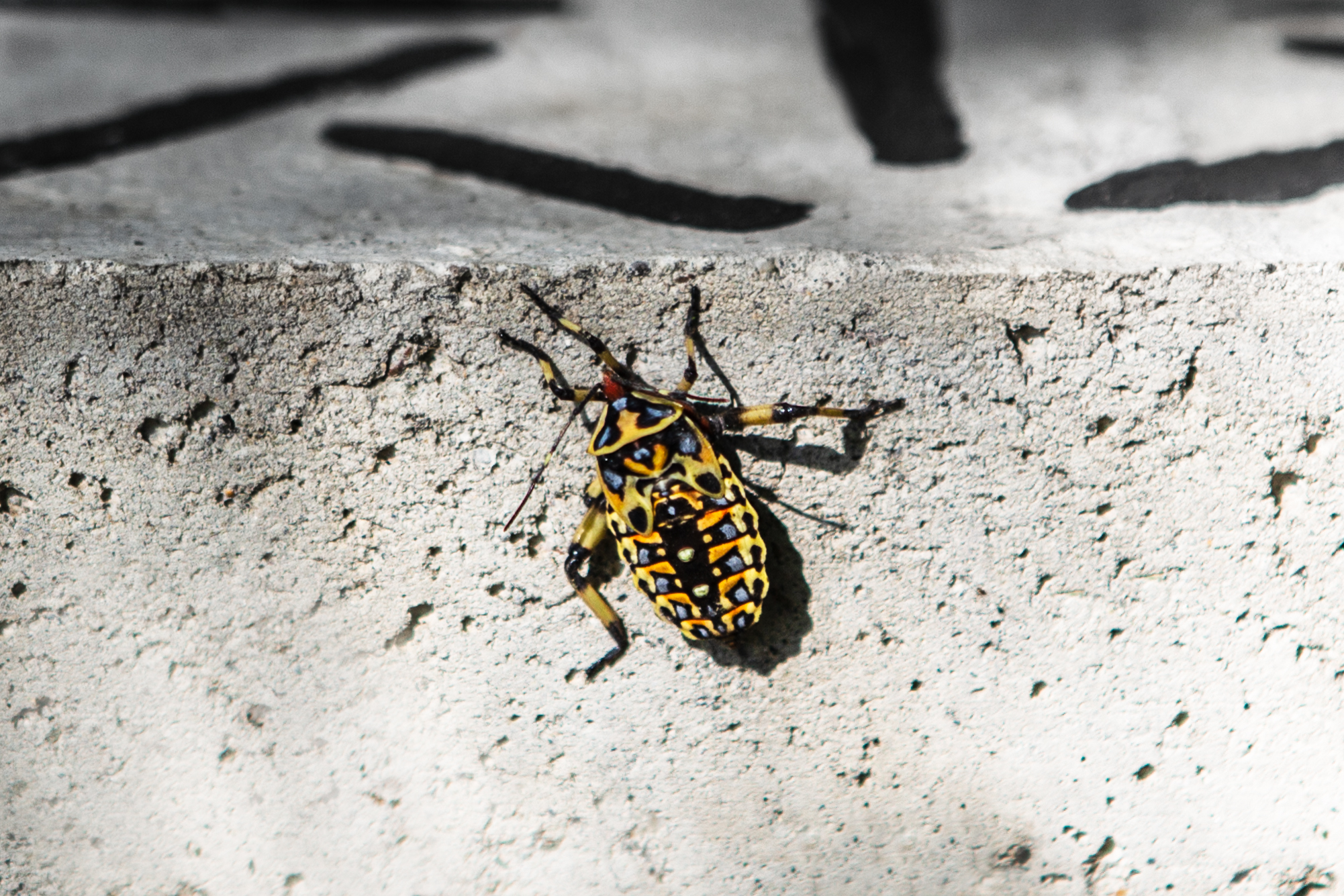By Paola Guevara, Colombian journalist and writer. January 17, 2021
Translated to English by Luzmaria Renjifo
In March 2020, when the Covid-19 pandemic closed international borders, artist, photo-biographer, and muralist Pipe Yanguas was visiting his parents in Colombia. Their home, a haven nestled on the Pance river banks that flows down the fertile Cauca Valley, became his refuge.
His mother, an architect; his father, a jeweler. Their home, a vast and well-known universe. One might define this involuntary situation as a return to childhood's paradise. It was a hiatus that lasted for months and demanded the undoing of travel plans, contracts, jobs, and projects. Life out there, mobile and rich in encounters, got replaced by lemon trees, lush vegetation, songs of exotic birds and bleating sheep, tranquil streams, textures of hammocks, heat, humidity, and insects.
One morning, amid a newly reclaimed life of contemplation, Pipe found a peculiar insect by the pool. It was large and astonishingly colorful. Its anatomy resembled a samurai warrior's breastplate, rendered in the apparent simplicity of dots and lines. It was a Coreid Bug Nymph, a member of an insect tribe that feeds on plant sap.
This spectacular insect's beauty was the starting point of his free and spontaneous artistic exploration. Pipe started using dots and lines as a language of composition and as a new language itself. Each piece is a visual synthesis and an arbitrary conceptualization that, nevertheless, transmits a meaning.
The dots and lines began by imitating the shape of these insects. Shortly after, they were used to form much more abstract compositions. Some are grounded in perfect symmetry, and others lay suspended in space before being irrevocably attracted by gravity.
Apart from dots and lines, the space between them becomes an essential part of this work as a series of involuntary calligraphies start to emerge. Their arbitrariness is the same that occurs in letters. They acquire meaning within a spaced convention, full of pauses, rhythm, and repetition.
The space between dots and lines places us in a cosmos where the laws of physics seem altered. Contact is only insinuated as part of the design and the trajectory. This lack of physical contact is in the image and likeness, one could say, of the pandemic that calls for distancing, isolation, no contact, and a wariness about hugs.
As the artist finds himself trapped by the pandemic in a parenthesis of space and time that seems to perpetuate itself, his parents' influences emerge in his art. The architectural element of his mother and his jeweler father's preciosity manifest in Pipe's art in an involuntary but potent way.
The reiteration of the elements (prevailing in Yayoi Kusama or Warhol's work) insinuates relationships with other realms. Perhaps with the textile, with the tribal, with the ritual, vegetation, or animals. Sometimes, the dots and lines announce a human face. However, it is only an illusion of the observer, who projects his or her figurative content onto the dots and lines.
The artist, parting from the purest naturalism, does not pay tribute to great masters. Instead, he invents a binary code, a new language (a recurring theme in his childhood games), or a DNA chain about to configure the kind of creation our eyes choose to see.
Color began with the essential presence of black and white. Then gray unfolded to incorporate red, yellow, blue, or a combination of them. Later, gold and silver entered the palette. It is a universe that sometimes expresses simplicity and sometimes luxury. Once again, his maternal and paternal influences unite.
From insect to paper, from paper to murals. Pipe's work has continued to mutate like a genetic code, like a virus whose vital mission is to reproduce itself in new formats. On the walls of his native Cali, an extension of his home, Pipe begins to leave a trace of his "contagion." It continues its way through the hands of private collectors or through the connections that, like dots and lines, trace the route to new houses, walls, and terraces waiting to be intervened.

| Coreid Bug Nymph |
